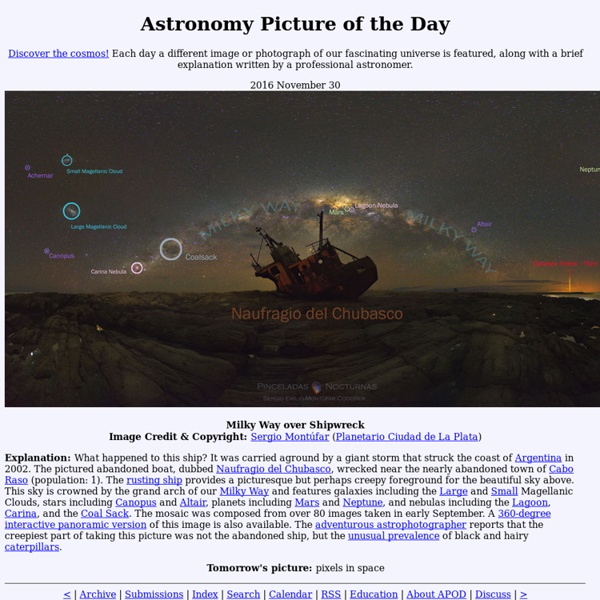With All These New Planets Found in the Habitable Zone, Maybe it's Time to Fine Tune the Habitable Zone
In the past few decades, thousands of extra-solar planets have been discovered within our galaxy. As of July 28th, 2018, a total of 3,374 extra-solar planets have been confirmed in 2,814 planetary systems. While the majority of these planets have been gas giants, an increasing number have been terrestrial (i.e. rocky) in nature and were found to be orbiting within their stars’ respective habitable zones (HZ). However, as the case of the Solar System shows, HZs do not necessary mean a planet can support life.
Space Weather Research Explorer: Space Weather and You
Coronal holes are easy to spot in pictures taken of the sun using extreme ultraviolet light (EUV). In these pictures, coronal holes show up as dark spots, because the trapped hot gas that would normally emit EUV light has been blasted into space by the particles exiting through the coronal hole. (By the way, the bright spots are active regions, likely sites for solar flares.) A coronal hole can persist for months or even years. As the sun turns on its axis (it makes one full rotation every 27 days), coronal holes come in and out of view.
Your Weight on Other Worlds
Ever wonder what you might weigh on Mars or The Moon? Here's your chance to find out. <div class="js-required"><hr> This Page requires a Javascript capable browser <hr></div> Fill in your weight below in the space indicated.
2010 review: 12 best pictures of the year - Image 1
17:42 22 December 2010 Our picture editors bring you the most striking images of the year, taken from our Picture of the Day feed. Image 1 of 13 Alien stubble
Incredible Pics from ISS by NASA astronaut Wheelock
Go Discovery! It was October 23, 2007 at 11:40am EST when I had my first ride to space on Discovery. She’s beautiful… just sad that this will be her last voyage. Looking forward to climbing aboard the flight deck when Discovery arrives at the Space Station in November. (9-23-2010).
Uh oh, Mars Doesn't Have Enough Carbon Dioxide to be Terraformed
For almost a century now, the concept of terraforming has been explored at length by both science fiction writers and scientists alike. Much like setting foot on another planet or traveling to the nearest star, the idea of altering an uninhabitable planet to make it suitable for humans is a dream many hope to see accomplished someday. At present, much of that hope and speculation is aimed at our neighboring planet, Mars. But is it actually possible to terraform Mars using our current technology? According to a new NASA-sponsored study by a pair of scientists who have worked on many NASA missions, the answer is no. Put simply, they argue that there is not enough carbon dioxide gas (CO2) that could practically be put back into Mars’ atmosphere in order to warm Mars, a crucial step in any proposed terraforming process.
Your Age on Other Worlds
Want to melt those years away? Travel to an outer planet! <div class="js-required"><hr> This Page requires a Javascript capable browser <hr></div> Fill in your birthdate below in the space indicated.
Your Sky
by John Walker Welcome to Your Sky, the interactive planetarium of the Web. You can produce maps in the forms described below for any time and date, viewpoint, and observing location.
Picture of the day archive
Douglas Heaven, reporter (Image: Murdoch Ferguson/Ferguson Imaging) Other primates have opposable thumbs, sure, but only we have an app for them.
Amazing Places To Experience Around the Globe (Part 3)
Devetashkata Cave - Bulgaria Ben Bulben at County Sligo, Ireland Shark Island - Sydney Baatara Gorge Waterfall, Tannourine - Lebanon
Just discovered! "Farout", the Farthest Object Ever Seen in the Solar System
Astronomers have discovered a distant body that’s more than 100 times farther from the Sun than Earth is. Its provisional designation is 2018 VG18, but they’ve nicknamed the planet “Farout.” Farout is the most distant body ever observed in our Solar System, at 120 astronomical units (AU) away. The International Astronomical Union’s Minor Planet Center announced Farout’s discovery on Monday, December 17th, 2018. This newly-discovered object is the result of a team of astronomers’ search for the elusive “Planet X” or “Planet 9,” a ninth major planet thought to exist at the furthest reaches of our Solar System, where its mass would shape the orbit of distant planets like Farout. The team hasn’t determined 2018 VG18’s orbit, so they don’t know if its orbit shows signs of influence from Planet X.
Space Calendar (JPL)
2014 [ Mar | Apr | May | Jun | Jul | Aug | Sep | Oct | Nov | Dec ] 2015 [ Jan | Feb | Mar | Apr ] Welcome to the Space Calendar! The Space Calendar covers space-related activities and anniversaries for the coming year.



